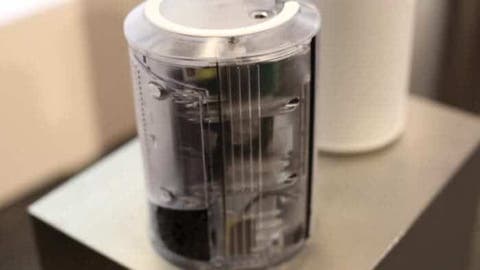The Sonos One still does a great job, however, the tech industry is changing. There was a time when companies only upgrade products because they no longer meet market needs. Now, most brands upgrade their devices following a schedule. Even though the Sonos One still does a decent job, the company is willing to upgrade it. The compact speaker has evolved over two generations and has a few variations to become one of the brand’s most well-known products. Really, compared to other connected home speakers, it’s been a big win for a company whose portfolio can smack off exclusivity. We now have the Sonos Era 100 and Era 300 as viable upgrades.
The Sonos One at a #179 price tag sounds perfect and is at the moment a popular choice for retail stores, restaurants and even homes. However, six years after the Sonos One’s initial launch, the company is basically putting an end to the model in order to make room for the Sonos Era 100. But just like the new HomePods, the new speaker isn’t backwards compatible with its predecessor in terms of creating a stereo duo. So the earlier iteration will continue to be available for a while.
Similar to Apple, Sonos claims that the two systems’ disparate tech makes them incompatible in terms of connection. The good news (or, more specifically, one of the good news) is that, unlike the Sonos One, the Era 100 performs stereo on its own. That’s clearly a very good thing.
Sonos Era 100
In contrast to its predecessor, the new speaker has a bigger mid-woofer and two angled tweeters. Echo cancellation, speech control, and Trueplay tuning—which gauges a room’s architecture and a wall’s distance from the speaker—are all performed using the onboard microphones. Also, the device has a physical button that lets you turn off the power to the microphone so that it won’t listen when you don’t want it to.
The on-board LED light will let you know if the mic is on and offer up connection and mute status. Buttons on top of the system include play/pause, skip, replay, voice assistant mute and the ability to pair or unpair devices. Around the rear is a connector that can be used as an auxiliary line or ethernet port with the right adapter.
At 7.18 x 4.72 x 5.14 inches, the Era 100 is a bit larger than the Sonos One (6.36 x 4.69 x 4.69 ) in all dimensions. At 4.44 pounds, it’s also 0.36 pounds heavier. That’s probably to be expected, given the upgraded internals here. Besides, I’d say that still qualifies the system as “compact.” Compare that to the second-gen HomePod’s 6.6-inch height and 5.60-inch diameter, for example.
Sonos Era 300
The Era 300, Sonos’ first venture into spatial audio, is now available alongside the Era 100. In an interview with Sonos CEO Patrick Spence, TechCurnch’s Brian Heater did ask about spatial audio’s brand issues. He also asked whether the link with headphone tracking is affecting the tech.
Here is Spence’s response in part
As you’ve experienced [the speaker], it’s different than a headphone experience, where you’re moving your head and maybe you’ve got the screen over here. There are some things that I think have delighted people but also freaked out some people, in terms of that experience with headphones. It’s a little bit more gimmicky. Spatial out loud is really about filling the room and making you feel like you’re at the center of it. The right use of spatial is really out loud, versus headphones.
Some of the early mixes weren’t fantastic because they lacked essential components like vocals or a center as audio producers and musicians began to understand what Spatial is all about. Most people who attempted it didn’t have a positive experience. Those individuals should give it another try. It’s true that a lot of contemporary music blends with spatial audio in mind, and a few streaming services, like Apple Music and Amazon Music, are adopting it (Spotify doesn’t seem to care much, it seems). Due to its embrace of tech, the Era 300 appears distinct from the 100. To fit that sensation of sound in three dimensions, the speaker has six amplifiers aimed in various directions.
Other specs
There are two woofers, two forward tweeters, two lateral tweeters, and an up tweeter. Like the 100, it supports Bluetooth 5 and Wi-Fi 6 (although the HomePod limits to Wi-Fi 4 due to processor restrictions). Both speakers can broadcast audio and video from iOS smartphones running iOS 11.4 or later using AirPlay 2. The 300 is bigger and heavier than the 100, measuring 6.30 x 10.24 x 7.28 inches and 9.85 pounds, respectively.
Both methods are environmentally friendly, using less electricity and recycled materials. (the packaging is also made up of fully recycled paper). They are both made to be more repairable, in large part because there are fewer adhesives, just in time for many pieces of freedom to fix laws.
When we were first bringing out our products 20 years ago, we were like, “how do you build these things so they’ll make the sound you want?” So we had to use things like adhesives. We’ve been able to come up with ways and inventions that allow us to disassemble these products. It comes into our thinking more broadly about what we’re building and how you live up to the law of the land, but even before that, we were already starting to use recycled materials. We were already starting to use things that allow it to be more easily repaired.
The two Sonos Era 100 and 300 will commence shipping on March 28th. These speakers will sell for $249 and $449, respectively.
